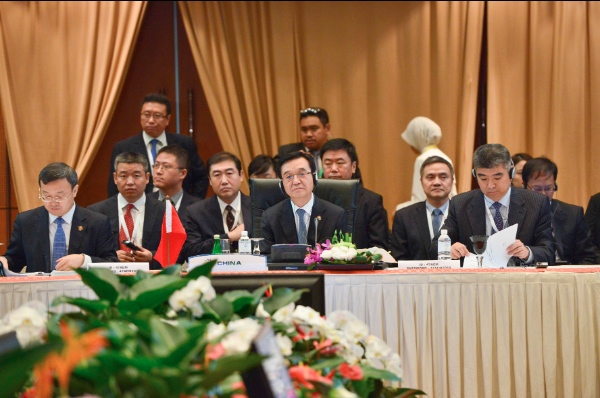

Follow us on:  
|


China and ASEAN have for years been discussing a code of conduct in the South China Sea, but now they are closer than ever on a unified document [Xinhua]
But China is slowly making headway with its neighbors to resolve outstanding territorial disputes over access to the strategic body of water that straddles, Vietnam, Laos, Japan, Philippines and China.
On Tuesday, ASEAN leaders highlighted what they called positive developments in their relationship with China, particularly in areas of concern such as security and economy.
A statement from the Philippine Foreign Ministry said: “The leaders welcomed the positive developments in ASEAN-China dialogue relations in three areas of cooperation, namely, political-security, economic, and socio-cultural or people-to-people exchanges.”
This comes a day after China and the 10 ASEAN members announced that they would begin consultations on the wording of the Code of Conduct (COC) in the South China Sea.
Delegates at the ASEAN meeting also decided to establish a hotline between different governments involved in the South China Sea disputes to quickly resolve any maritime entanglements.
In a bid to increase cooperation and good conduct between all South China Sea countries, ASEAN also said it would hold maritime exercises with China.
Maritime disputes between China on the one hand and the Philippines, Vietnam, Malaysia, Brunei and Taiwan on the other have caused tensions in the region and often led to a war of words between Beijing and Washington.
Beijing claims 90 per cent of the South China Sea, a maritime region believed to hold a wealth of untapped oil and gas reserves and through which roughly $4.5 trillion of ship-borne trade passes every year.
Beijing has long accused Washington of meddling in the South China Sea. The US conducts periodic air and naval patrols near the disputed islands that have angered Beijing.
The Chinese Foreign Ministry in October filed a formal complaint with US authorities in protest of a US naval destroyer crossing into territorial waters claimed by Beijing in the South China Sea near the Xisha Islands.
China has been in control of the Xisha Islands, also known as the Paracel Islands, since 1974, but announced the the baseline of territorial waters there in 1996.
Beijing says that guided missile destroyer the USS Chafee, entered its territory on Tuesday and carried out “freedom of navigation” maneuvers without Chinese consent.
The BRICS Post with inputs from Agencies